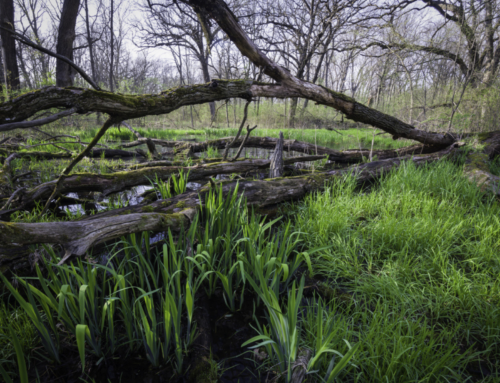February 20, 2014
Re: D.P.U. 13-165
Investigation by the Department of Public Utilities on its own Motion into Best Practices for the Siting of Land-Based Wind Energy Facilities
Dear Mr. Marini,
On behalf of the Connecticut River Watershed Council (CRC), I am submitting comments on the DPU’s investigation into best practices for the siting of land-based wind energy facilities under docket 13-165. CRC is the principal nonprofit environmental advocate for protection, restoration, and sustainable use of the Connecticut River and its watershed. CRC has no formal opinion on wind energy facilities, yet we do have a high level of experience with many different power generating facilities in our watershed and the trade-offs between the need for power and impacts to natural resources. While we agree with some of the policy comments submitted by the Franklin Regional Council of Governments on February 6, 2014, our comments focus exclusively on issues related to impacts related to streams, wetlands, and habitat.
Description of our concerns
Our concerns relate to the DPU’s areas of inquiry related to B. “Environmental and Human Health,” specifically land clearing, soil erosion, habitat impacts; and wetlands, ground/surface water quality, and stormwater/drainage impacts; as well as D. “Construction impacts.”
Most of the areas in the Massachusetts part of the Connecticut River watershed identified as having high wind resources are in higher elevation areas and ridgelines (according to the online tool http://maps.massgis.state.ma.us/map_ol/wind.php). It is in these areas where the most pristine and sensitive headwater areas exist. There is ample scientific evidence showing that healthy headwaters are essential to the health of stream and river ecosystems. For reference, we recommend a report co-produced in 2003 by American Rivers and the Sierra Club titled, Where Rivers Are Born: The Scientific Imperative for Defending Small Streams and Wetlands (online at http://www.sierraclub.org/watersentinels/downloads/WhereRiversAreBorn.pdf ). This report states that,
“Scientific research shows that healthy headwater systems are critical to the healthy functioning of downstream streams, rivers, lakes and estuaries. To provide the ecosystem services that sustain the health of our nation’s waters, the hydrological, geological, and biological characteristics of small streams and wetlands require protection…. The goal of protecting water quality, plant and animal habitat, navigable waterways, and other downstream resources is not achievable without careful protection of headwater stream systems.”
For this reason, we feel that wind energy may not be appropriate in all areas identified as having high wind energy potential, and siting needs to be done very carefully. Additionally, we have opposed streamlining the Wetlands Protection Act permitting for wind facilities in higher elevation areas because of our concern for protecting headwater streams and seeps.
Clearing the site, building access roads, and installing pads for the turbine arrays will alter the hydrology of headwater areas and displace some species by fragmenting habitat. For habitat considerations, the Wind Siting Panel should review the U.S. Fish and Wildlife Service’s 2012 report “Land Based Wind Energy Guidelines,” available online at http://www.fws.gov/windenergy/docs/WEG_final.pdf .
Many turbines installed these days have towers above 250 feet in height, with blades greater 180 feet in length (totaling heights greater than 430 feet to the tip of the blade at its highest point). As the wind facility is constructed, each blade is delivered individually, requiring tractor-trailer delivery. To construct the towers and install the blades, a crane that can reach the height of the hub is necessary. As a result, roads are constructed to the top of mountains or hills at least 30 feet wide (plus the side slope cuts and fills increasing the widths in some instances to 100 feet), and pads for each turbine can be 1-2 acres in size (again, plus the side slopes)
Roads and turbine pads are a concern for water quality, because they add significant impervious cover (paved or gravel), and require much blasting and earth moving to build them. There are acute impacts during construction from soil erosion, and long term impacts from the maintenance of the roads and their existence as an impervious surface. Constructing adequate stormwater facilities is challenging in hilly and mountainous terrain. There is a reason we have left most mountain and ridge tops in the Commonwealth undeveloped.
The following photographs, and caption text, illustrate some of our concern
Berkshire Wind in Massachusetts, 390 feet tall. Note roadways and cleared areas. Source of photo: iBerkshires.com.
Hoosac Wind in Florida and Monroe, MA. Note substantial roadway and gravel area. Source of photo: WAMC website.
Lowell, VT wind energy facility. Aerial view of ridgetop roadway. Source of photo: wind-watch.org.
Lowell, VT. View of roadway and pad under construction. Source of photo: wind-watch.org.
Lowell VT, one of 21 turbine pads. Source of photo: wind-watch.org.
Granite Reliable Wind Project, Coos County, NH. Example of roadway under construction along mountain slope. Source of photo: wind-watch.org.
Comments and recommendations
In response to question #2, siting guidance for wind energy facilities (WEFs) should differ based on location-specific factors. Any WEFs proposed along ridgelines should get an additional level of scrutiny. The state should undergo a scientific review of literature related to wetland, water quality, and habitat impacts related to ridgeline development. The wind working group should consult with other neighboring states to determine what best management practices (BMPs) for stormwater control have worked best and what ones have not (in other words, are the BMPs working on the ground, and which ones are working best?). Best practices for WEFs and associated roads and pads should be developed after a more rigorous scientific review takes place.
The regulatory framework for stormwater in Massachusetts includes the Massachusetts Stormwater Handbook (http://www.mass.gov/eea/agencies/massdep/water/regulations/massachusetts-stormwater-handbook.html) used to comply with the stormwater policy that is incorporated into the Wetlands Protection Act and the Massachusetts Clean Waters Act. The Handbook is not specifically geared to WEF projects and also not geared to issues of building large roadways and blasting turbine pads in upper elevations and steep slopes. Adjacent states have done a detailed review of their stormwater regulations and standards in preparation for or in response to large WEFs; Massachusetts should do the same. Streamlining permitting should only take place after a thorough review of how our stormwater framework does or does not adequately protect our natural resources on ridge tops, whether or not disturbed areas are within a wetland or wetland buffer zone.
There should be public review and comment of wind projects through the Massachusetts Environmental Policy Act, even if they are less than the 100 MW energy threshold in the current MEPA regulations.
The MA Department of Fish and Game should be included on the wind working group, as well as the Energy Facilities Siting Board for +2MW wind projects.
Pre- and post-construction environmental monitoring should be required for ridgetop WEFs. The following protocols should be implemented to provide an appropriate baseline assessment and monitoring program to determine the impacts of any experimental stormwater management system:
- EPA-approved biological assessment that includes invertebrates, fish, amphibians and reptiles consistent with Massachusetts monitoring strategies
- Rapid Habitat Assessments
- Stream Geomorphic Assessments
- Water quality monitoring that includes real time water temperature and flow data transponders and multiprobe infield meters.
- Visual monitoring of stormwater BMPs over time.
Massachusetts should carefully determine the best way to construct WEFs in a manner that significantly reduces the impacts of the current standard of the wind industry for construction; in particular to protecting headwater wetlands and streams from sediment and thermal pollution.
Thank you for the opportunity to provide comments.
Sincerely,
Andrea F. Donlon
River Steward













